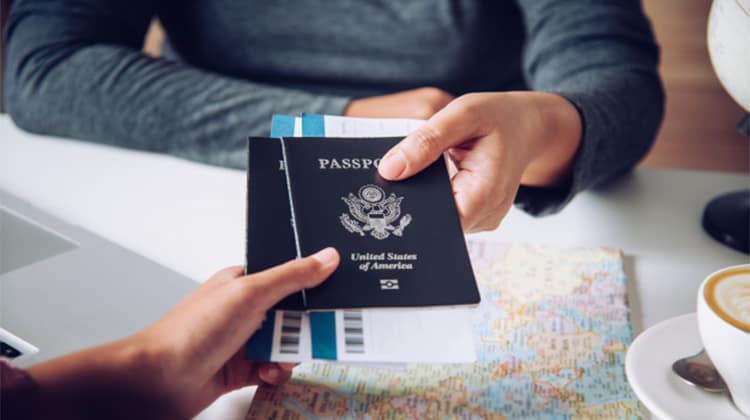Applying for a work (employment) visa is a major step for anyone who plans to live and earn in another country. Although exact rules, forms, and timelines differ widely between destinations, the overall process follows a set of common stages: eligibility assessment, employer sponsorship or job offer, document gathering, application submission, biometric and medical requirements, background checks, decision, and arrival/settlement steps. This post walks through each stage in detail, points out common pitfalls, and offers practical tips to help applicants prepare and move through the process more smoothly.
Secure a job offer and, when needed, sponsorship
- Employer offer: Most employment visas require a formal job offer. The employer’s involvement can range from providing an offer letter to applying for a sponsorship license or certificate on your behalf.
- Sponsorship obligations: Sponsored roles often require employers to prove they meet wage minimums, that the role is genuine and sometimes that they tried to recruit locally first. Employers may need to register with immigration authorities as an approved sponsor and issue an official sponsorship certificate or reference number.
- Contract details: A clear employment contract (job title, duties, salary, start date, working hours, and duration) will usually be necessary as part of the visa application.
Tip: Get the job offer and contract in writing; make sure it meets the visa’s salary and role requirements.
Assess paperwork and gather documents
- Identity documents: Valid passport(s), passport photos that meet specifications, birth certificate if requested.
- Employment documents: Job offer/contract, sponsorship certificate or employer letter, job descriptions, proof of qualifications, CV/resume.
- Proof of credentials: Degree certificates, professional licenses, transcripts, letters from previous employers verifying experience, and credential evaluations where required.
- Financial documents: Recent bank statements, payslips, or employer statements proving you can support yourself (or that the employer will).
- Police/security clearances: A criminal record check or police certificate from countries where you lived for a certain time may be required.
- Medical evidence: Proof of required vaccinations and/or medical examinations (chest X-rays, HIV tests) depending on country rules.
- Language tests: Official results from an approved English test (IELTS, TOEFL) or equivalent local-language proof if the visa requires it.
Tip: Prepare certified copies of key documents and have documents translated into the required language by an accredited translator if needed.
Complete the online application and pay fees
- Online forms: Many countries now use online portals for work visas. You will typically set up an account, choose the correct visa category, and complete personal, employment, and travel history sections.
- Upload documents: Attach required scans in the correct file format and size. Missing or incorrect documents commonly delay processing.
- Payment: Pay the application fee and any healthcare surcharge or insurance fees required by the destination. Retain receipts and confirmation numbers.
- Appointment booking: After submission, you may need to book a biometrics appointment at a visa application center or consulate for fingerprinting and photographs.
Tip: Work through the checklist on the official portal carefully. Save a copy of each submission and receive printed/electronic confirmations.
Biometrics, photos and medical checks
- Biometrics: Most work visa processes require fingerprints and a digital photo. These are usually collected at an application center or embassy after you submit your application.
- Medical exams: Specific medical tests may be required for certain durations or job types. These must often be done by an approved clinic and results forwarded directly to the immigration authority.
- Vaccinations: Some countries require proof of vaccination (e.g., yellow fever) if you are traveling from certain regions.
Tip: Book biometrics and medical appointments early — there can be heavy demand in some locations.
Police checks, background and security screening
- Character checks: Authorities frequently check criminal records and immigration history. A previous immigration breach or criminal conviction can be grounds for refusal.
- Security checks: National security or employment suitability checks may be carried out for roles with sensitive responsibilities.
- Additional documents: Authorities may request supplementary information (bank statements, rental records, or letters of explanation) during processing.
Tip: If you have any past issues (criminal convictions, visa overstays), disclose them early and provide supporting documentation or legal explanations. Non-disclosure is a common cause of refusal.
Processing times and potential delays
- Processing windows: Timelines vary from a few weeks for routine temporary work visas to several months for skilled immigration routes or applications requiring external verifications.
- Causes of delay: Missing or unclear documentation, long background checks, employer delays in providing sponsorship materials, and required security checks can extend processing.
- Tracking: Use the immigration portal to track progress and respond quickly to any requests for further evidence.
Tip: Apply as early as permitted (but not too early—some documents have validity windows). Factor in potential delays before planning travel or employment start dates.
Visa decision, collection and pre-departure steps
- Decision notification: You’ll usually be informed of the decision by email or through the portal. Successful applicants receive a visa vignette, electronic travel authorization, or a stamped passport. Some countries first grant temporary entry or a travel authorization and issue the physical visa after arrival.
- Conditions and validity: Carefully read conditions (e.g., work restrictions, employer-specific ties, duration, start/end dates, ability to change employers) and the visa’s expiration.
- Appeal or reapply: If refused, the notification typically explains why and whether you can appeal or submit a fresh application. Understand deadlines and grounds for appeal.
- Pre-departure: Arrange travel, housing, insurance and plan for arrival formalities such as registering with local authorities, applying for a national ID number or tax number, opening a bank account, and arranging accommodation.
Tip: Make copies of your visa/entry documentation and ensure your employer has the information they need for your start date and enrollment in any workplace programs.
Arrival, registration and compliance
- Immigration entry checks: Upon arrival you may still face immigration checks. Carry original documents, employer letter, and contact details in case officials request them.
- Registration and permits: Some countries require local registration, resident ID cards, social security numbers, or tax registration soon after arrival. Meeting these deadlines is crucial to remain compliant.
- Work rules: Follow any restrictions, such as working only for the sponsoring employer or in approved job categories. Unauthorized work can lead to visa cancellation and future bans.
- Renewals and settlement: Note renewal windows or pathways to permanent residency if you intend to stay long-term. Keep records of employment and tax payments to support future applications.
Tip: Keep a digital and physical file of all immigration and employment documents. Familiarize yourself with local labor laws and workplace rights.
Common pitfalls and how to avoid them
- Missing documentation: Verify the exact list and format. Use government checklists and provide certified translations when required.
- Employer mistakes: Make sure your employer understands their obligations (sponsorship license, correct salary band, correct job code). Missteps on their side can jeopardize your application.
- Timing errors: Don’t book non-refundable travel until the visa is granted. Some documents (medical reports, police checks) have limited validity.
- Overstaying or working illegally: Do not enter and start working on the assumption everything will be approved later.
- Ignoring small print: Carefully check conditions (employer-specific visa, restrictions on additional jobs, probation periods affecting visa status).
Tip: Consider hiring an immigration lawyer or accredited advisor for complex cases, such as appeals, criminal records, or unusual employment arrangements.
Helpful resources and preparation checklist
- Official immigration website of the destination country — primary, authoritative source.
- Employer’s HR or immigration liaison — essential for sponsored roles.
- Accredited immigration advisors or registered lawyers — useful for complex or high-stakes cases.
- Visa application centers — for scheduling biometrics and submissions.
- Embassy/consulate contact pages — for country-specific nuances and emergency advice.
Basic pre-application checklist you can use:
- Confirm the correct visa category and eligibility criteria.
- Obtain and sign a written job offer/contract that matches visa requirements.
- Collect identity documents (passport valid for required duration).
- Gather proof of qualifications, licenses, and work references.
- Get police clearance certificates if required.
- Complete any required language or credential assessments.
- Schedule and complete medical examinations and biometrics.
- Fill out online application, upload documents, pay fees and save receipt.
- Track application status and respond promptly to requests.
- Prepare for arrival tasks: local registration, bank account, housing, and tax ID.
Conclusion
While the specifics of a work visa application vary with each country and visa class, the overall flow remains similar: determine the correct visa, secure a qualifying job or sponsorship, gather and certify documents, submit the application and biometrics, complete medical and police checks, wait for a decision, and then comply with arrival and registration requirements. Thoughtful preparation, careful documentation, and clear communication with your employer and the immigration authorities dramatically improve your chances of a smooth outcome. If your case is complicated or you face a refusal, consult an accredited immigration advisor or lawyer to explore options such as appeals or reapplications.





